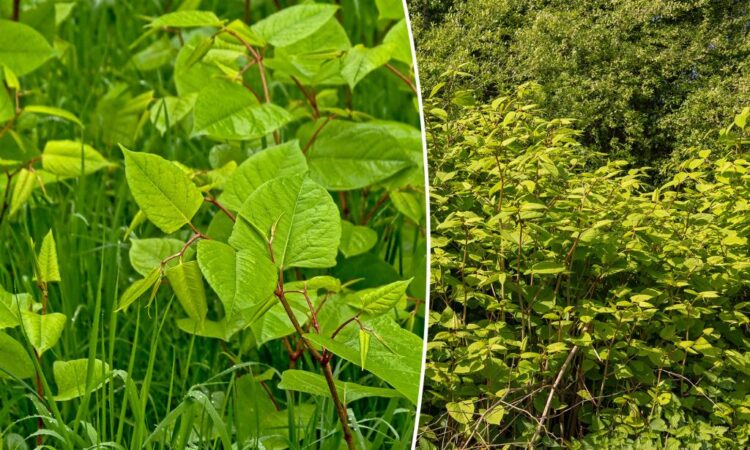Invasive, fast-growing plant threatens homes, property prices as it spreads across the US

This may be one pest you can’t weed out.
An invasive, non-native plant species has grown root and spread, posing a threat to manicured yards and even home foundations across the American Midwest, North West and North East.
The Japanese knotweed is a shrub-type plant that was brought to the US in the 1800s, according to The Wall Street Journal, and while its summertime flower blooms are breathtaking, it’s merely a mirage hiding the havoc it wrecks.

With the capability of growing three feet per week, infestations of the looming plant — which have stalks that look like bamboo, per CNY News — are rapid and near-impossible to eradicate, cropping up in the cracks of concrete or asphalt just when you think you’ve vanquished it.
Robert Naczi, the New York Botanical Garden’s curator of North American botany, told the Journal that an entire plant can grow just from a minuscule piece of root, thriving in just about any condition.
“You have to respect this plant,” Naczi said. “They’re known to grow inches per day in the spring.”
The plant has been known to grow as tall as 15 feet.
Across the pond, homeowners in the UK must disclose if Japanese knotweed has taken up root on the property when selling the home, with the potential to be prosecuted if it spreads, per the Journal. There’s even knotweed insurance available for regular maintenance, although it still is a detriment to the values of their homes.
The Daily Mail reports that there are now fears that the plant “threatens to catastrophically devalue homes” in areas of the US where it can grow.

One Maine couple detailed their laborious attempts to rid their new home of knotweed to the Journal, and that, even years later, it still hasn’t vanished.
Various methods are available to curb the plant or kill it altogether — such as routine mowing or digging up roots, per the Journal. Other experts might advise chopping down the plant when it flowers and injecting it with herbicide, although a pesticide expert is recommended.
Researchers have discovered a particular kind of bug — Aphalara itadori — which is known to eat Japanese knotweed.
In 2020, scientists from the University of Massachusetts in Amherst were allowed to release them and monitor their impacts, discovering that they are successfully making a dent in the giant knotweed population, although it’s unclear how the critter will affect Japanese knotweed.
“I’ve never been so excited to see a plant suffering before,” Jeremy Andersen, a research assistant professor who is part of the university’s team, told the Journal.
“They looked like their life essence had been sucked out of them.”
